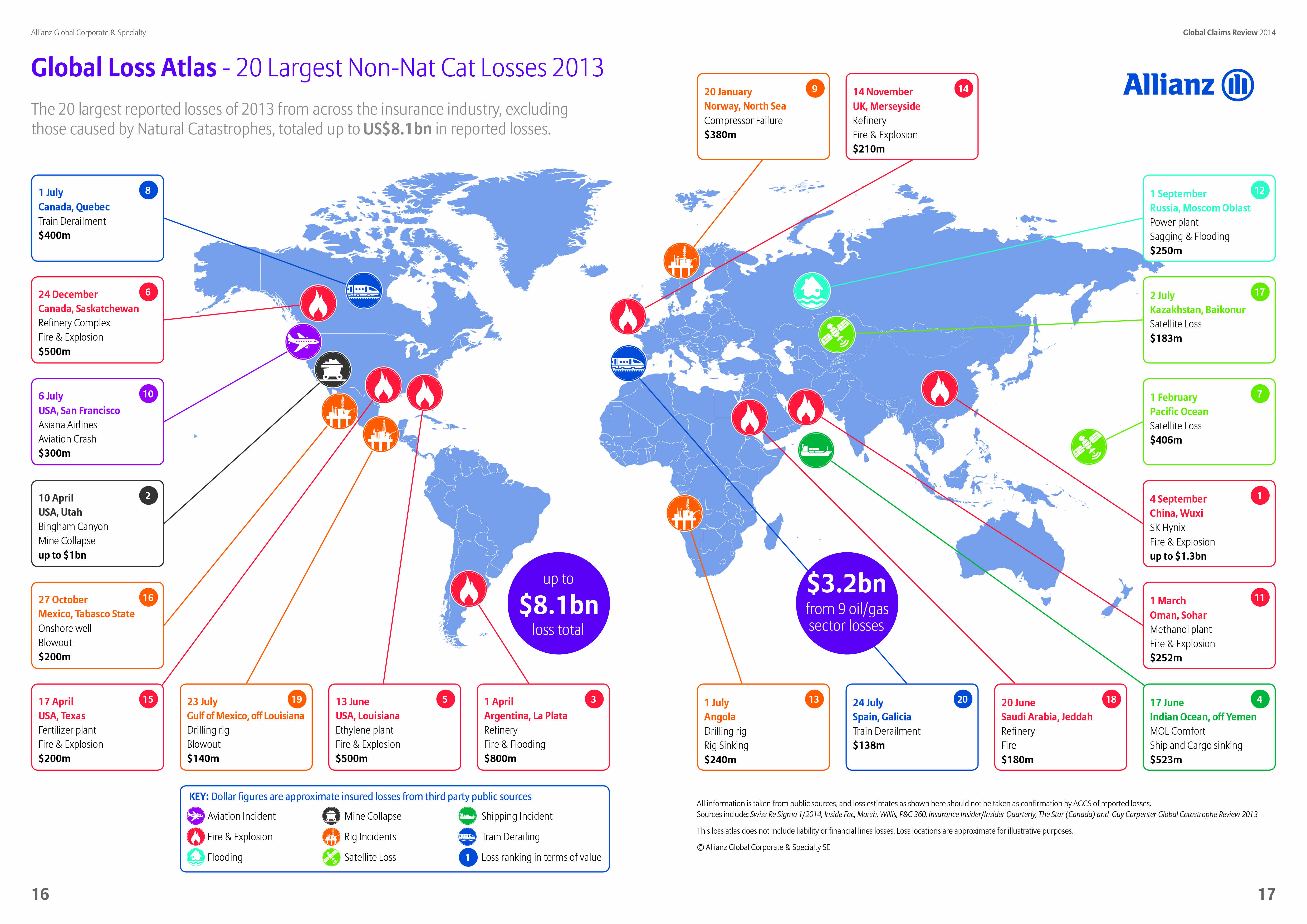A report released Wednesday by Allianz Global Corporate & Specialty (AGCS) identifies the top factors impacting financial losses for businesses, with ship groundings, fires and aviation crashes leading the list.
Nearly 70% of financial losses can be attributed to 10 factors based on a review of more than 11,000 business claims over $136,455 from 148 countries between 2009 and 2013.
- Grounding
- Fire
- Aviation crash
- Earthquake
- Storm
- Bodily injury (including fatalities)
- Flood
- Professional indemnity
- Product defects
- Machinery breakdown
Click infographics to enlarge
Recommended For You
Want to continue reading?
Become a Free PropertyCasualty360 Digital Reader
Your access to unlimited PropertyCasualty360 content isn’t changing.
Once you are an ALM digital member, you’ll receive:
- Breaking insurance news and analysis, on-site and via our newsletters and custom alerts
- Weekly Insurance Speak podcast featuring exclusive interviews with industry leaders
- Educational webcasts, white papers, and ebooks from industry thought leaders
- Critical converage of the employee benefits and financial advisory markets on our other ALM sites, BenefitsPRO and ThinkAdvisor
Already have an account? Sign In Now
© 2025 ALM Global, LLC, All Rights Reserved. Request academic re-use from www.copyright.com. All other uses, submit a request to [email protected]. For more information visit Asset & Logo Licensing.









